Abstract
A prospective study was performed to evaluate the efficacy of continuous venous oximetry to supplement traditional hemodynamic monitoring in 39 critically ill surgical patients. There was no statistically significant difference in SvO2 between the continuous in vivo values and in vitro values (0.694 +/- 0.095 vs. 0.698 +/- 0.108). There was no statistically significant correlation between continuously measured SvO2 and PaO2 (r = 0.09, p greater than 0.5), SaO2 (r = 0.08, p greater than 0.5), or oxygen consumption (r = 0.46, p greater than 0.5). There was a slight but statistically significant correlation between continuously measured SvO2 and cardiac output (r = 0.40, p less than 0.025) and oxygen delivery (r = 0.49, p less than 0.005). There was a highly significant correlation between continuously measured SvO2 and oxygen utilization coefficient (r = -0.96, p less than 0.001). Continuously measured SvO2 is a reliable predictor of SvO2 measured intermittently by in vitro methods. In critically ill surgical patients, SvO2 does not correlate highly with the individual determinants of oxygen transport but rather correlates with the oxygen utilization coefficient and therefore reflects the overall balance between oxygen consumption and delivery.
Full text
PDF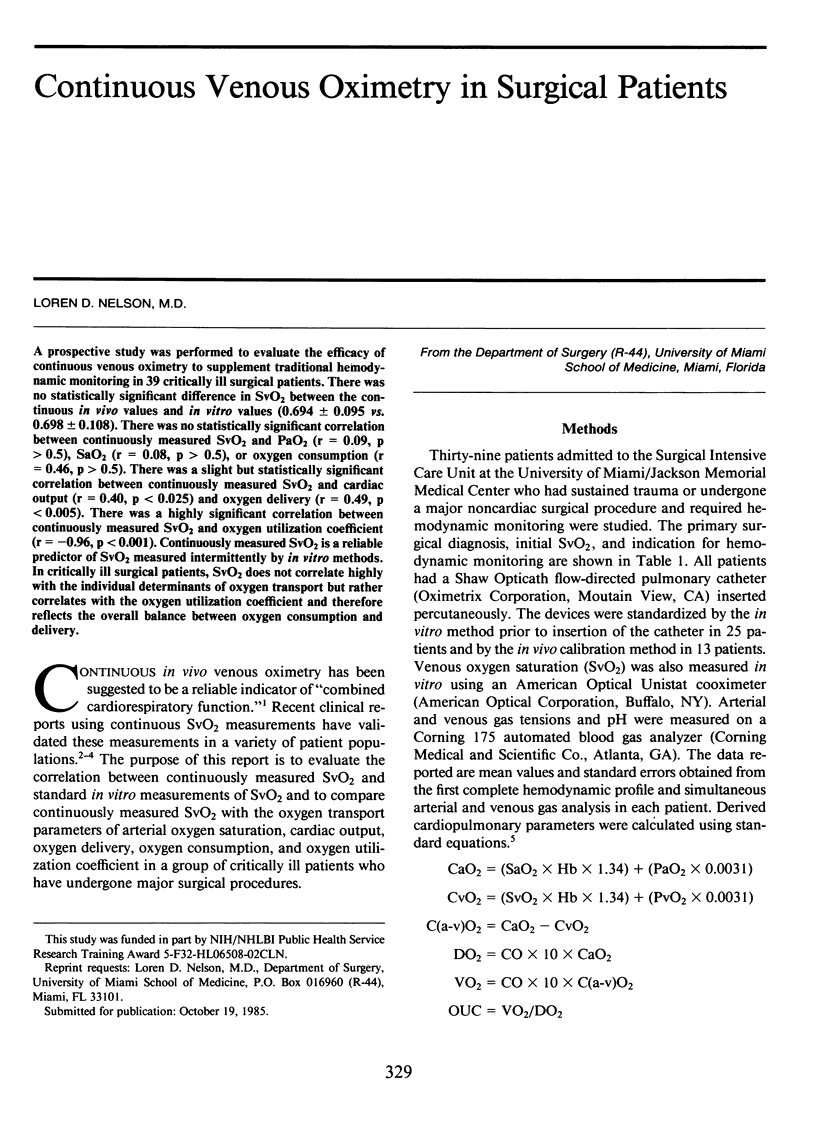
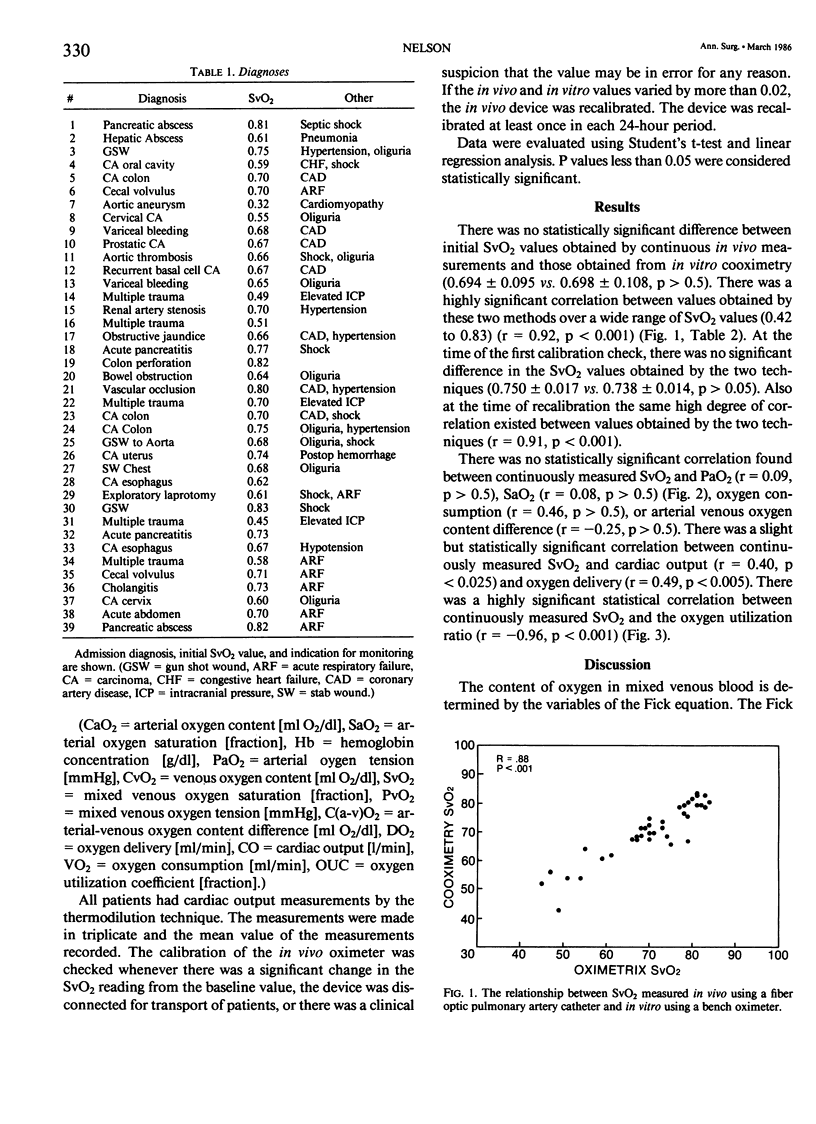
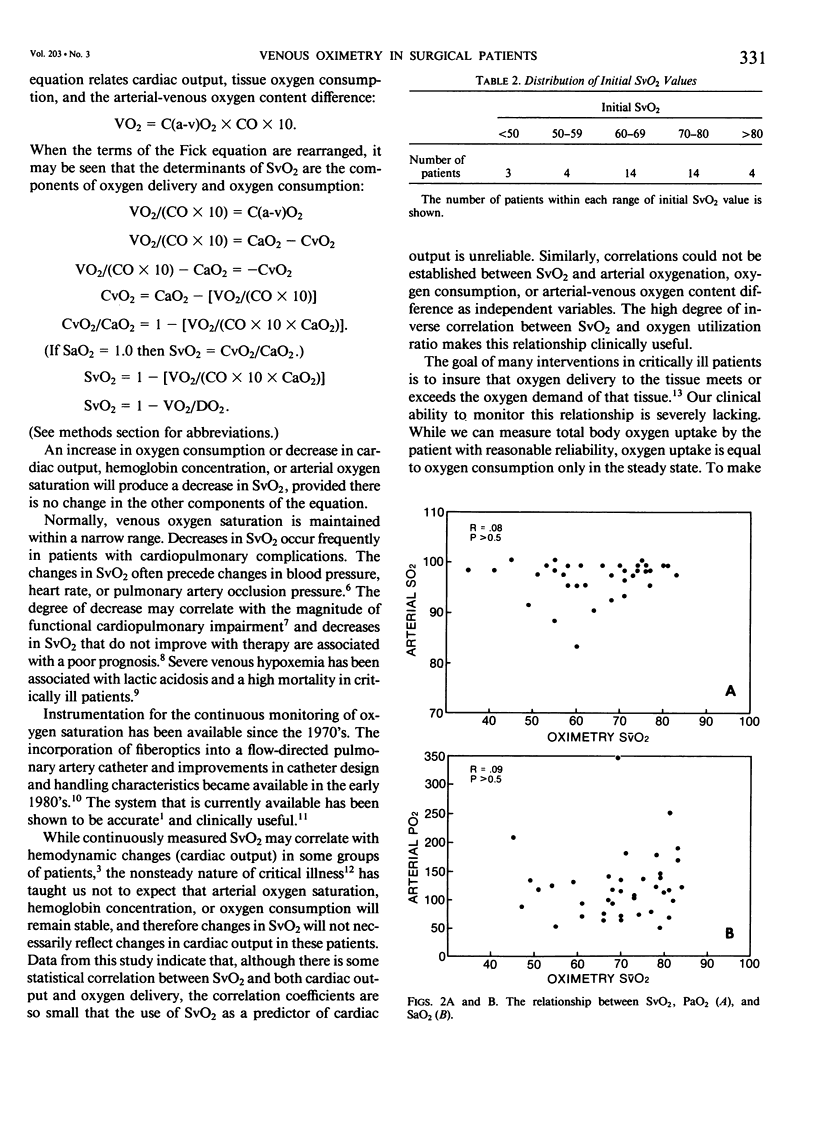
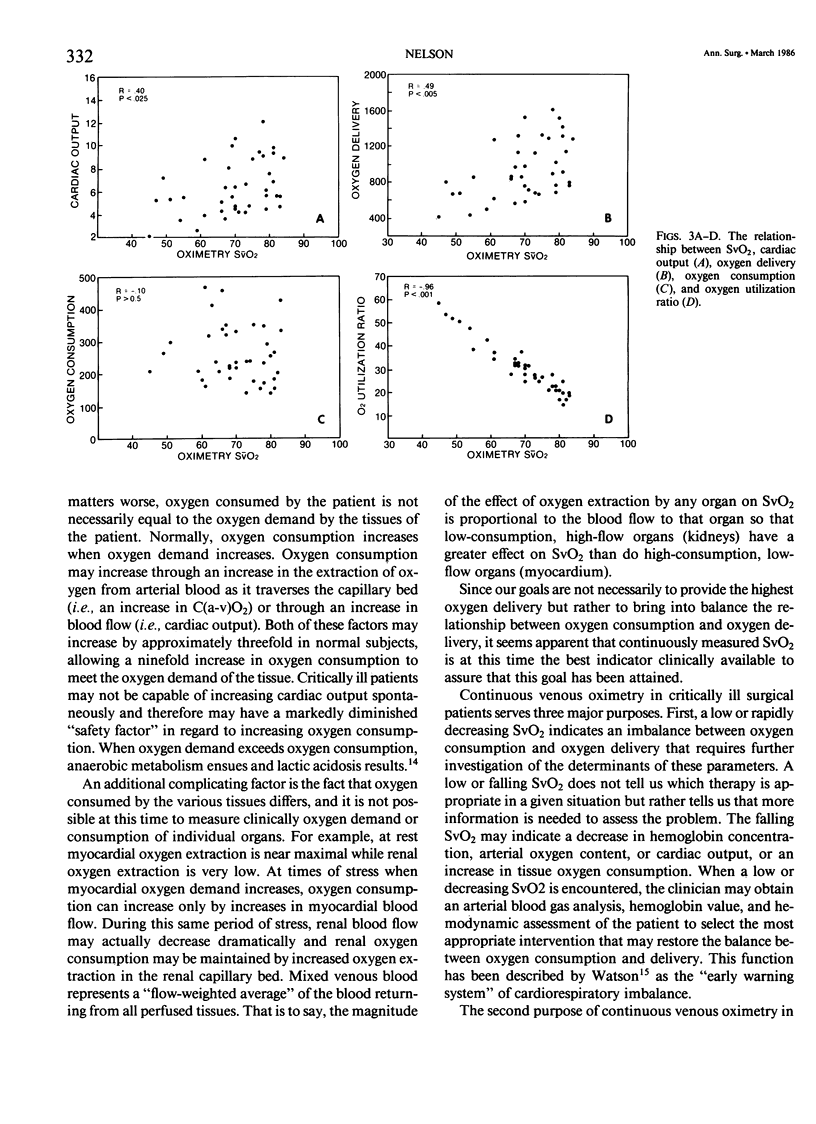
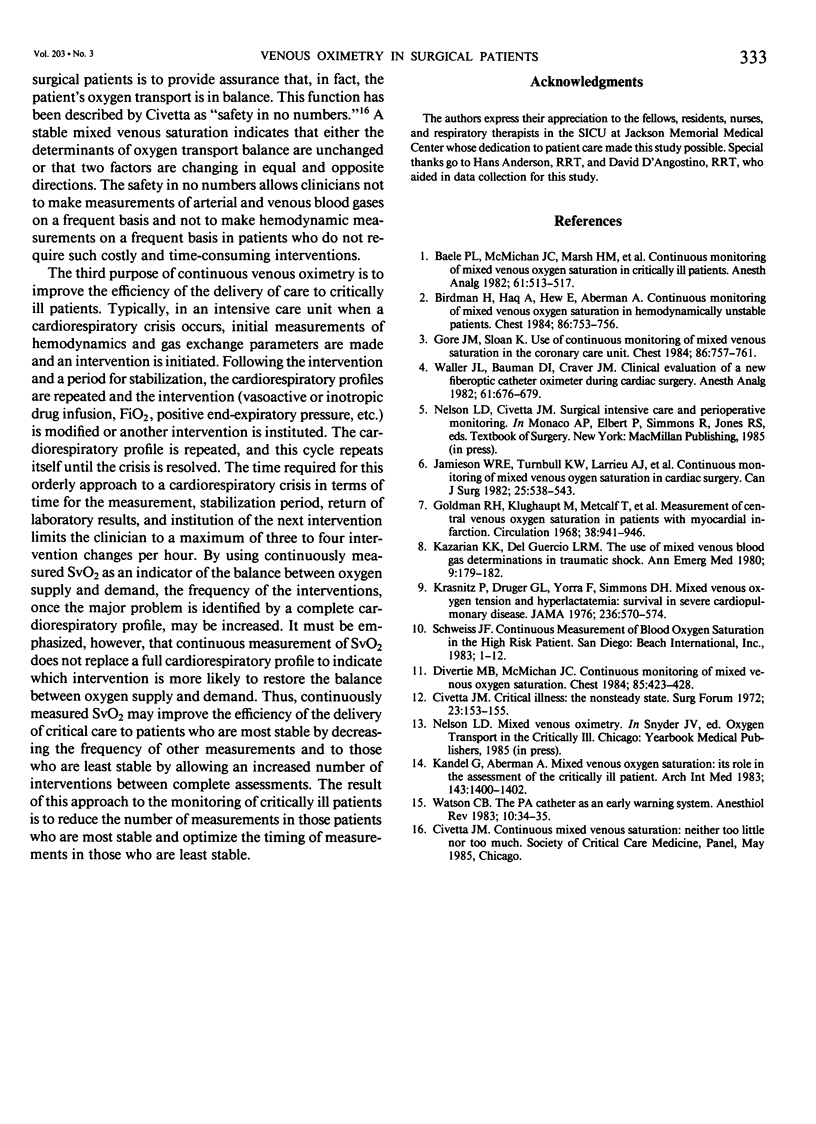
Selected References
These references are in PubMed. This may not be the complete list of references from this article.
- Baele P. L., McMichan J. C., Marsh H. M., Sill J. C., Southorn P. A. Continuous monitoring of mixed venous oxygen saturation in critically ill patients. Anesth Analg. 1982 Jun;61(6):513–517. [PubMed] [Google Scholar]
- Birman H., Haq A., Hew E., Aberman A. Continuous monitoring of mixed venous oxygen saturation in hemodynamically unstable patients. Chest. 1984 Nov;86(5):753–756. doi: 10.1378/chest.86.5.753. [DOI] [PubMed] [Google Scholar]
- Civetta J. M. Critical illness--the nonsteady state. Surg Forum. 1972;23(0):153–155. [PubMed] [Google Scholar]
- Divertie M. B., McMichan J. C. Continuous monitoring of mixed venous oxygen saturation. Chest. 1984 Mar;85(3):423–428. doi: 10.1378/chest.85.3.423. [DOI] [PubMed] [Google Scholar]
- Goldman R. H., Klughaupt M., Metcalf T., Spivack A. P., Harrison D. C. Measurement of central venous oxygen saturation in patients with myocarial infarction. Circulation. 1968 Nov;38(5):941–946. doi: 10.1161/01.cir.38.5.941. [DOI] [PubMed] [Google Scholar]
- Gore J. M., Sloan K. Use of continuous monitoring of mixed venous saturation in the coronary care unit. Chest. 1984 Nov;86(5):757–761. doi: 10.1378/chest.86.5.757. [DOI] [PubMed] [Google Scholar]
- Jamieson W. R., Turnbull K. W., Larrieu A. J., Dodds W. A., Allison J. C., Tyers G. F. Continuous monitoring of mixed venous oxygen saturation in cardiac surgery. Can J Surg. 1982 Sep;25(5):538–543. [PubMed] [Google Scholar]
- Kandel G., Aberman A. Mixed venous oxygen saturation. Its role in the assessment of the critically ill patient. Arch Intern Med. 1983 Jul;143(7):1400–1402. doi: 10.1001/archinte.143.7.1400. [DOI] [PubMed] [Google Scholar]
- Kasnitz P., Druger G. L., Yorra F., Simmons D. H. Mixed venous oxygen tension and hyperlactatemia. Survival in severe cardiopulmonary disease. JAMA. 1976 Aug 9;236(6):570–574. [PubMed] [Google Scholar]
- Kazarian K. K., Del Guercio L. R. The use of mixed venous blood gas determinations in traumatic shock. Ann Emerg Med. 1980 Apr;9(4):179–182. doi: 10.1016/s0196-0644(80)80002-3. [DOI] [PubMed] [Google Scholar]
- Waller J. L., Kaplan J. A., Bauman D. I., Craver J. M. Clinical evaluation of a new fiberoptic catheter oximeter during cardiac surgery. Anesth Analg. 1982 Aug;61(8):676–679. [PubMed] [Google Scholar]


